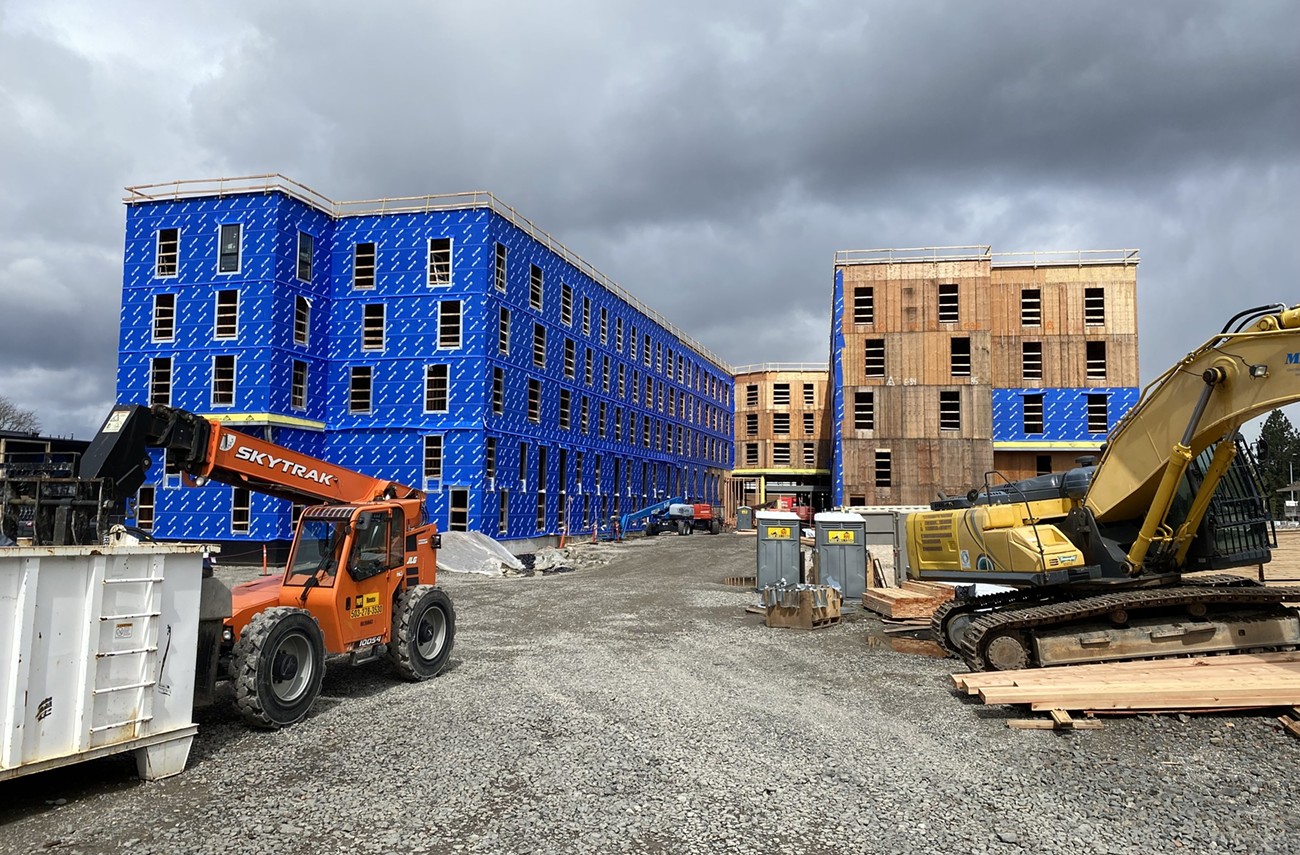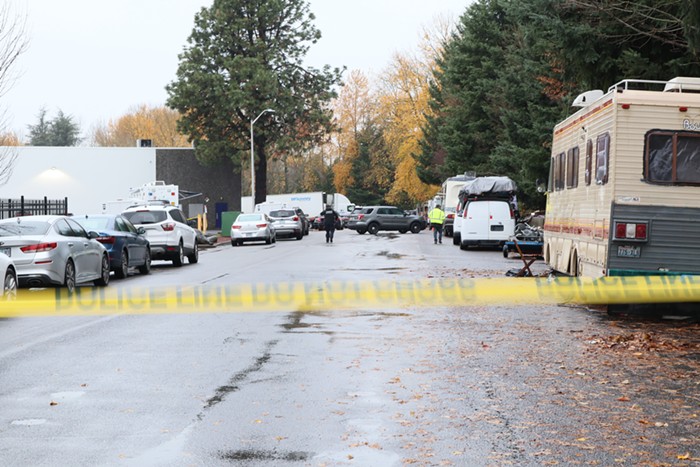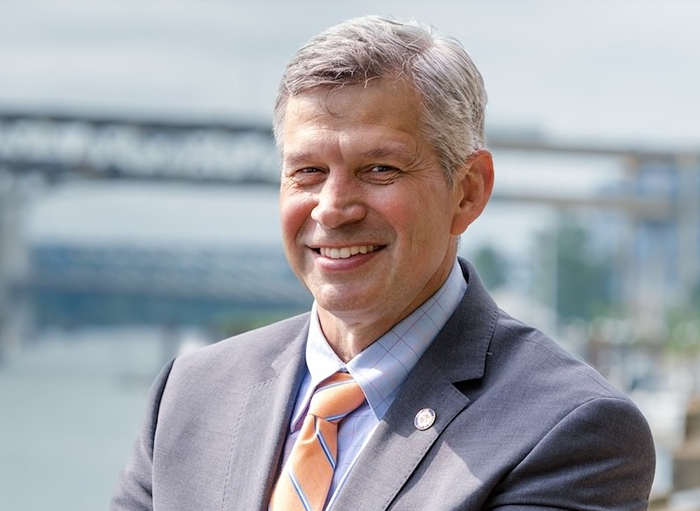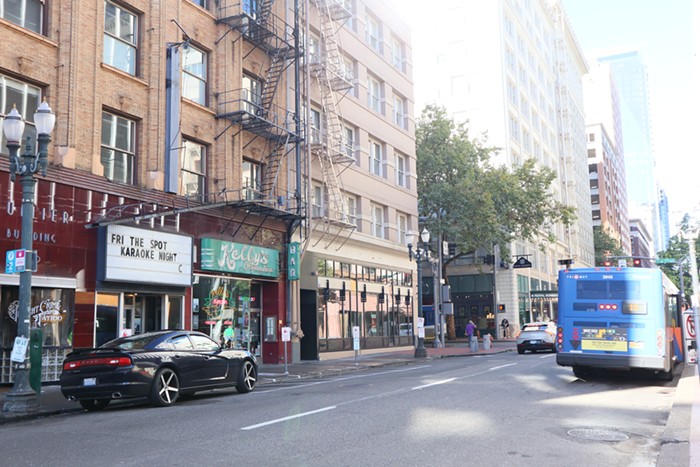There’s no one magic bullet that will solve Portland’s housing crisis. But city leaders and developers think strict regulations are part of the reason local housing construction has slumped.
Housing construction across Oregon, and in the Portland metro area in particular, has fallen behind. Addressing Oregon’s housing shortage has been Governor Tina Kotek’s primary goal since entering office last year—so much so that housing production is the only item on her 2024 legislative agenda. Portland officials wanted to address the problem on their own terms, too.
A new plan out of Portland’s Bureau of Planning and Sustainability (BPS), the Housing Regulatory Relief Project, aims to temporarily do away with restrictive zoning code requirements and development standards in order to expedite housing development and curb Portland’s shortage.
Some key elements of the Housing Regulatory Relief Project, set to be adopted by City Council on January 31, were informed by a survey of development professionals conducted by the Bureau of Development Services last winter. Survey respondents listed the zoning requirements they felt were most challenging to housing construction, with top results including bike parking mandates, the first floor active use requirement, maximum height limits, and timing of payment for system development charges.
Most of the regulations would be waived for five years, while others would be permanently removed from Portland city code. With City Council approval, the changes would go into effect March 1.
During a January 10 hearing, Portland City Council heard from a broad coalition of interests in support of the regulatory relief package, which aims to set Portland on track to meet its goal of building 55,000 units of housing by 2032.
However, the council discussion highlighted a point of contention among housing development advocates. It also raised concerns about commissioners’ allegiances to business interests above the needs of the broader community, and whether or not crafting housing policy based on developer input will actually lead to more construction. Over the last decade, at least two prior code overhaul projects were guided by developer input, but Portland still lacks enough affordable homes.
While it appears most Portlanders think building more housing is a net positive, there are disagreements about what should be sacrificed to get there. As three city commissioners—Carmen Rubio, Rene Gonzalez, and Mingus Mapps—compete to be the next mayor, their decisions now may offer a glimpse into Portland’s future.
What’s in the Housing Regulatory Relief package, and why is it important?

The city is eager to remove hurdles to new housing development, without removing key provisions that maintain aesthetics, protect wildlife, and align with the city’s climate goals.
After city staffers developed an initial draft of proposed regulatory changes, the Portland Planning Commission took over last fall, holding public hearings and work sessions to form their recommended draft. The Planning Commission’s draft laid out 15 total code amendments, and listed five “key proposals.” Among them: temporarily reducing the number of required bike parking spaces per dwelling unit, permanently relaxing in-unit bike parking requirements, temporarily allowing units to be built on the ground floor (rather than the mixed use currently required for new apartment buildings in Central City neighborhoods), and making temporary and permanent changes to the process of notifying people who live near a planned new residential use project.
Responses to the Planning Commission’s recommendations, particularly from people who work in development, were overwhelmingly positive.
Cassidy Bolger, director of development at real estate company Killian Pacific, told the council he “appreciates the spirit of partnership with the private sector that the city has shown” through the regulatory code overhaul project. Bolger said some current development requirements impede building on land his company already owns, as they’re still under permit review.
Lauren Jones, vice president of development at Capstone Partners, also testified in support.
“The need for additional housing in Portland is clear and we must do everything we can to encourage production if we’re going to meet our shared goals,” Jones said.
While some bike advocates raised concerns about the relaxed bike parking requirements, many also said they understood the need for urgent housing policy reform.
During the Planning Commission work sessions, commissioners discussed temporarily suspending bird-safe glazing and ecoroof requirements, both of which are included in the Central City 2035 development plan, as well as temporarily suspending the neighborhood contact requirement altogether.
Bird-safe glazing refers to a window treatment that makes glass more visible to birds, so they avoid it as a barrier instead of flying right into it.
The ecoroof requirement mandates new buildings with a net area of at least 20,000 square feet to have ecoroofs that meet city design standards. Ecoroofs serve many purposes, including providing urban green space and habitats for plants, birds, and pollinators, and they’re especially important for stormwater management in a rainy city like Portland.
The commission ultimately decided against all three of these changes, though they did vote to temporarily relax elements of all three of them. Notably, the Planning Commission draft proposes permitting solar panels as an alternative to ecoroofs. However, all three of these rejected amendments were brought back to life at the January 10 hearing.
Last-minute pitch against environmental regulations draws backlash

Less than 24 hours before the January 10 hearing, in the middle of the public testimony period for the regulatory relief project, Commissioner Rene Gonzalez suggested reversing the Planning Commission’s decision on bird-safe glazing, ecoroof requirements, and neighborhood contact. His proposals did not land well.
Ultimately, all three of his proposed amendments were rejected by the council at the January 17 meeting. But the saga left a bad taste in many Portland environmentalists’ mouths, and was a source of tension between Gonzalez and Commissioner Carmen Rubio, who leads BPS and headed this project.
Gonzalez’s amendments to suspend environmental requirements drew backlash from climate and wildlife advocates, who said the commissioner was putting Portland’s legacy of environmentalism at risk, in order to cater to the city’s wealthy developers. They expressed doubt that either bird-safe windows or ecoroof requirements have posed a genuine challenge to housing development in the city.
Bob Salinger, the conservation director at environmental nonprofit Willamette Riverkeeper, wrote a lengthy letter asking commissioners to oppose Gonzalez’s amendments.
“Commissioner Gonzalez’s amendments were last minute (and beyond), confusing, divisive, and determined by the Planning Commission via a much more thoughtful, deliberative process to be marginal for housing but highly damaging to the environment,” Salinger wrote. “This issue was heavily discussed at the time of adoption [by the Planning Commission] and in other forums and the data shows far less cost than what was presented by self-serving development interests."
Others, such as members of the Portland Metro Chamber (formerly the Portland Business Alliance) wrote to council in support of Gonzalez’s amendments.
“The requirement for bird-safe glazing in particular is one that puts Portland at a competitive disadvantage when seeking to attract capital; simply put, investors will look to markets with fewer novel and costly regulations,” their letter reads.
Most of the council voted “no” on Gonzalez’s amendments at the January 17 meeting. Commissioner Dan Ryan voted with Gonzalez on the window glazing and ecoroof amendments. Gonzalez’s neighborhood contact amendment failed 4-1.
Rubio expressed discomfort with Gonzalez’s attempt at last-minute changes. She emphasized the work the Planning Commission did developing the plan, including having conversations about the specific topics in Gonzalez’s amendments.
“It’s important that we acknowledge and respect the years-plus work that has already been undertaken,” Rubio said.
Gonzalez said his amendments were in response to concerns from the “development community” that they felt left out of the Planning Commission’s process.
“I worry we missed an opportunity here, in one of our last remaining opportunities to meaningfully address as a council, to attract capital and development in the city of Portland,” Gonzalez said. He also insinuated that “special interest groups” from the environmental movement were able to weaken the potential of this plan late in the game.
While the council voted down the amendments for now, they left the door open for a future work session discussion about the reported impediments to development.
What’s next for the plan?
Portland City Council will take a final vote on the Housing Regulatory Relief ordinance on January 31. The project is just one of several ways Portland leaders hope to address the housing crisis. During the same meeting, the council will also vote on another housing plan, the Inclusionary Housing Ordinance.
While developers say the relaxed regulatory requirements will help them overcome hurdles in the construction process, it’s unclear how transformative the reforms will be.
At Wednesday’s council meeting, Mayor Ted Wheeler recounted the past housing policy reform efforts that ultimately didn’t bear much fruit. Wheeler said through his time as mayor, he has seen developers cite numerous issues as being impediments to housing development.
Wheeler said during the process of passing the Central City 2035 plan, originally adopted in 2018 before any of the current commissioners were in office, he “burned a lot of political capital… effectively spot zoning parts of our city” based on developer recommendations.
“We had developers come in and testify that if these amendments passed, they would build,” Wheeler said. “And I’m still looking at a lot of parking lots where my political capital was burned, but no housing was developed.”
Wheeler said the city passed a variety of other projects, like the Better Housing by Design plan and Residential Infill project, both of which he supported, but did not fix the housing problem. Developers have also cited a variety of other issues, like permitting, taxes, and interest rates, as hurdles to building more housing.
“Now here we are talking about bird glazing, ecoroofs, and neighborhood contacts as if they were the primary impediments to affordable housing in our community,” Wheeler said. “If we say, ‘If we just get rid of the environmental protections, wildlife protections, and public involvement, everything’s going to be great,’ I personally don’t buy it. If we’re going to address these issues, I would like to take the time to bring thoughtful, measured, vetted proposals to council.”
Correction: A previous version of this story misidentified the bureau running the project. While staffers from the Bureau of Development Services were involved in the process of developing the plan, the Housing Regulatory Relief project will be overseen by the Bureau of Planning and Sustainability, also overseen by Commissioner Carmen Rubio.




















